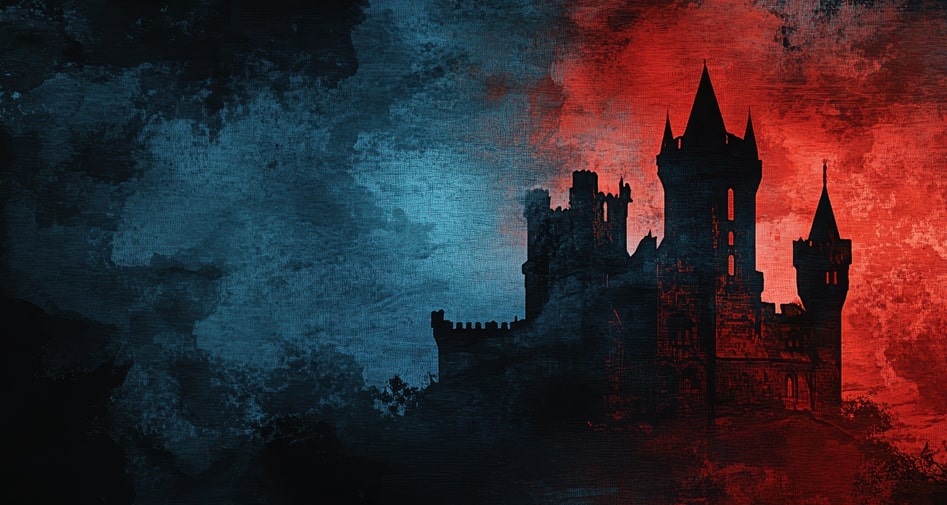Reading time: 2 min
Attention: This is a scary story.
Once upon a time there was a child who was willful, and would not dowh at her mother wished. For this reason God had no pleasure in her, and let her become ill, and no doctor could do her any good, and in a short time she lay on her death-bed. When she had been lowered into her grave, and the earth was spread over her, all at once her arm came out again, and stretched upwards, and when they had put it in and spread fresh earth over it, it was all to no purpose, for the arm always came out again. Then the mother herself was obliged to go to the grave, and strike the arm with a rod, and when she had done that, it was drawn in, and then at last the child had rest beneath the ground.
 Learn languages. Double-tap on a word.Learn languages in context with Childstories.org and Deepl.com.
Learn languages. Double-tap on a word.Learn languages in context with Childstories.org and Deepl.com.Backgrounds
Interpretations
Adaptions
Summary
Linguistics
„The Willful Child“ is a short, dark fairy tale from the Brothers Grimm collection, also known as „KHM 117“ or „A Stubborn Child“ in some translations. The Brothers Grimm, Jacob and Wilhelm Grimm, were German scholars, linguists, and cultural researchers who collected and published numerous folktales and legends during the 19th century. Their work has had a significant impact on the development of folklore studies and has inspired countless adaptations in literature, film, and other media.
The Brothers Grimm first published „The Willful Child“ in their 1812 collection „Children’s and Household Tales“ (Kinder- und Hausmärchen), which contained 86 stories. They continued to revise and expand the collection, with the final edition featuring over 200 tales. „The Willful Child“ is one of the lesser-known tales and is quite brief compared to other famous stories such as „Cinderella“ or „Snow White.“
The fairy tale reflects the cultural and societal norms of the time when it was written, emphasizing the importance of obedience, religious beliefs, and the role of parents in raising and disciplining their children. Like many other Grimm’s fairy tales, it features dark and cautionary elements, which were intended to convey moral lessons to the readers.
„The Willful Child“ by Brothers Grimm can be interpreted in several ways. Here are a few interpretations:
Consequences of disobedience: The story serves as a cautionary tale about the consequences of disobedience and stubbornness. The willful child’s refusal to listen to her mother leads to her illness and eventual death. This can be seen as a metaphor for the dangers of not following parental guidance, as well as a warning for children to be obedient and respectful.
Parental responsibility: The mother’s role in disciplining her child is also highlighted in the story. She is ultimately responsible for ensuring her daughter’s eternal rest by striking her arm with a rod. This could be interpreted as a reminder to parents about their duty to discipline and teach their children, even when it is difficult or painful.
Divine intervention: The story emphasizes the role of God in the child’s life, as it is God’s displeasure with the child’s behavior that leads to her illness and death. This could be seen as a reminder of the importance of following religious teachings and moral values.
The persistence of character traits: The willful child’s stubbornness continues even after her death, symbolized by her arm refusing to stay buried. This could suggest that certain character traits are deeply ingrained and can be difficult to change, even in the face of severe consequences.
Power of forgiveness and redemption: The mother’s act of striking her daughter’s arm with a rod can also be seen as an act of forgiveness and redemption. Once the mother takes this action, her daughter can finally rest in peace. This may imply that forgiveness and redemption can lead to peace and resolution, even in the most challenging circumstances.
„The Willful Child“ has been adapted in various forms of media, including theater, film, and literature. Here are some notable adaptations:
Operas: The tale has been adapted into several operas, including „Der eigenwillige Knabe“ by August Ferdinand Riccius and „Der eigensinnige Junge“ by Gustav Rebling.
Films: There have been several film adaptations of „The Willful Child,“ including the 1914 German silent film „Der eigenwillige Knabe“ and the 1978 Soviet animated film „The Stubborn Boy.“
Literature: „The Willful Child“ has been adapted in various forms of literature, including children’s books, such as „The Obstinate Boy“ by Paul Galdone, and graphic novels, such as „The Stubborn Child“ by Jeanne Willis and Tony Ross.
Television: The tale has been adapted into several episodes of television shows, such as „The Storyteller“ and „Faerie Tale Theater.“
Modern adaptations: The tale has also been re-imagined in modern contexts, such as the horror film „Don’t Be Afraid of the Dark“ (2010), which draws on elements of the tale to create a modern horror story.
Overall, „The Willful Child“ has proven to be a popular source of inspiration for artists and storytellers, and its themes of obedience, consequences, and arrogance continue to resonate with audiences today.
In the Brothers Grimm fairy tale „The Willful Child,“ a disobedient and stubborn girl constantly disobeys her mother, leading God to become displeased with her. As a result, the girl falls seriously ill, and despite the efforts of doctors, she dies shortly after. She is buried, but her stubbornness persists even in death. Her arm keeps emerging from the grave, refusing to stay buried no matter how many times it is reburied. Finally, the girl’s mother is forced to visit the grave and strike her daughter’s arm with a rod. This action finally causes the arm to retreat, allowing the willful child to rest peacefully beneath the ground. The story serves as a cautionary tale about the consequences of disobedience and stubbornness.
The fairy tale „The Willful Child“ by the Brothers Grimm is a brief yet complex narrative that addresses themes of willfulness, parental authority, and divine retribution. Through a linguistic lens, the tale can be analyzed by examining its structure, diction, and underlying moral framework.
Narrative Structure: The story follows a classic fairy tale structure with a clear beginning, middle, and end. The narrative is linear, recounting events in a straightforward chronological order. „Once upon a time“ is a conventional opening phrase used in many fairy tales, setting the story in an indeterminate past, which adds an element of timelessness.
Characterization and Diction: The language used to describe the child, particularly the adjective „willful,“ is central to the story’s thematic focus. The word implies stubbornness and defiance, suggesting a moral failing in the child. The lack of personal names for the characters (the child, the mother) and the allusion to a divine authority (God) is typical of fairy tales and serves to universalize the narrative, making it applicable to any reader or listener.
Moral and Ethical Implications: The story’s moral is underscored by divine judgment. God’s displeasure results in the child’s illness and death, reflecting a common theme in folklore where moral transgressions lead to dire consequences. The repetitive emergence of the child’s arm from the grave symbolizes unresolved defiance or lack of repentance, which is only quelled by the physical intervention of the mother. This act implies that parental correction can lead to peace, even posthumously.
Symbolism and Imagery: The arm emerging from the grave serves as a powerful image of unresolved rebellion and the persistence of willfulness, even beyond death. The use of a rod by the mother symbolizes authority and discipline, which are ultimately portrayed as means to restore order.
Cultural and Historical Context: As with many Grimm tales, this story reflects the cultural and moral values of 19th-century Europe, particularly those relating to obedience and the familial hierarchy. The tale can be seen as a cautionary story that reinforces the importance of deference to parental and divine authority.
Overall, „The Willful Child“ is a succinct yet rich narrative embedded with moral lessons typical of the Brothers Grimm’s fairy tales. Through its language and imagery, it conveys messages about obedience, divine displeasure, and the necessity of parental intervention.
Information for scientific analysis
Fairy tale statistics | Value |
|---|---|
| Number | KHM 117 |
| Aarne-Thompson-Uther-Index | ATU Typ 779 |
| Translations | DE, EN, DA, ES, PT, IT, JA, NL, PL, TR, VI, ZH |
| Readability Index by Björnsson | 42 |
| Flesch-Reading-Ease Index | 72.3 |
| Flesch–Kincaid Grade-Level | 12 |
| Gunning Fog Index | 14.3 |
| Coleman–Liau Index | 5.9 |
| SMOG Index | 3.3 |
| Automated Readability Index | 12 |
| Character Count | 694 |
| Letter Count | 528 |
| Sentence Count | 4 |
| Word Count | 143 |
| Average Words per Sentence | 35,75 |
| Words with more than 6 letters | 9 |
| Percentage of long words | 6.3% |
| Number of Syllables | 166 |
| Average Syllables per Word | 1,16 |
| Words with three Syllables | 0 |
| Percentage Words with three Syllables | 0% |

 Facebook
Facebook  Whatsapp
Whatsapp  Messenger
Messenger  Telegram
Telegram Reddit
Reddit













